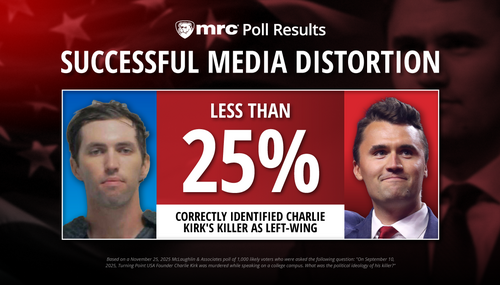Just when you consider cutting the Associated Press a break for doing something right, they pull this.
Most people know that in the interest of "not spiking the football," the Obama administration has decided that it will not release photos of Osama bin Laden's dead body.
Shortly after the decision was announced, AP filed a Freedom of Information Act request for said photos. According to John Hudson at the Atlantic (HT to Jim Taranto at the Wall Street Journal's Best of the Web), the AP's Michael Oreskes claims that "This information is important for the historical record" and "It's our job as journalists to seek this material." So far, so good.
But you just knew they'd figure out a way to potentially ruin it. Here's Oreskes as quoted by Hudson:
"We're not deciding in advance to publish this material," he pledged. "We would like our journalists, who are working very hard, to see this material and then we'll decide what's publishable and what's not publishable based on the possibly (sic) that it's inflammatory."
Really? The WSJ's Taranto pegs this preemptive censorship correctly (italics are in original):
Oreskes is trying to have it both ways, isn't he? Like the government, he is willing in principle to withhold the photos from the public. He faults the government only for withholding them from journalists. "We'll decide," he says. But what gives the AP that right? Who elected Michael Oreskes?
To be sure, part of the job of a journalist is to decide when not to publish information, and this sometimes entails making judgments about what is in the public interest. In this case, however, the AP is demanding specific information on the ground that the public has a right to know it. If the public really has a right to see the photos, the AP has no more business withholding them than the government does.
The AP's position as stated by Oreskes appears to violate one of the wire service's ethical tenets (bold is mine):
In our online service, we link the least offensive image necessary to tell the story. For photo galleries and interactive presentations we alert readers to the nature of the material in the link and on the opening page of the gallery or interactive. If an obscene image is necessary to tell the story, we blur the portion of the image considered offensive after approval of the department manager, and flag the video.
The problem is that the photos are the story; therefore, holding back any of them would by definition compromise that story's telling. Without seeing all of the visuals, viewers will not be able to arrive at a fully informed judgment as to whether the administration's decision to withhold them as "inflammatory" was defensible -- and, not coincidentally, determine the veracity of the administration's assertions as to what actually transpired in the military operation.
Additionally, the withholding of photos could be seen as an attempt by AP to protect the administration it has clearly favored for several years from the exposure of potentially harmful material. I'm not completely clear on FOIA, but it to seems to me that one a request is granted, its target may be able to say, "Been there, done that, it's too much effort to do it again, so go away" to subsequent requests -- in which case the public may never see the photos AP deigns too gory, too disturbing, or too harmful to the administration's interests. If the AP's FOIA request is successful and it selectively releases the photos obtained, we'll never truly be able to judge its motivations.
The AP's subscribers should demand to see all of the photos; their annual assessments would seem to give them that right. If the AP demurs, it would seem that withholding of assessments would be an appropriate and defensible action to take to force them out.
What's utterly indefensible is gatekeepers like the AP and Michael Oreskes deciding what we're allowed to see.
Cross-posted at BizzyBlog.com.




